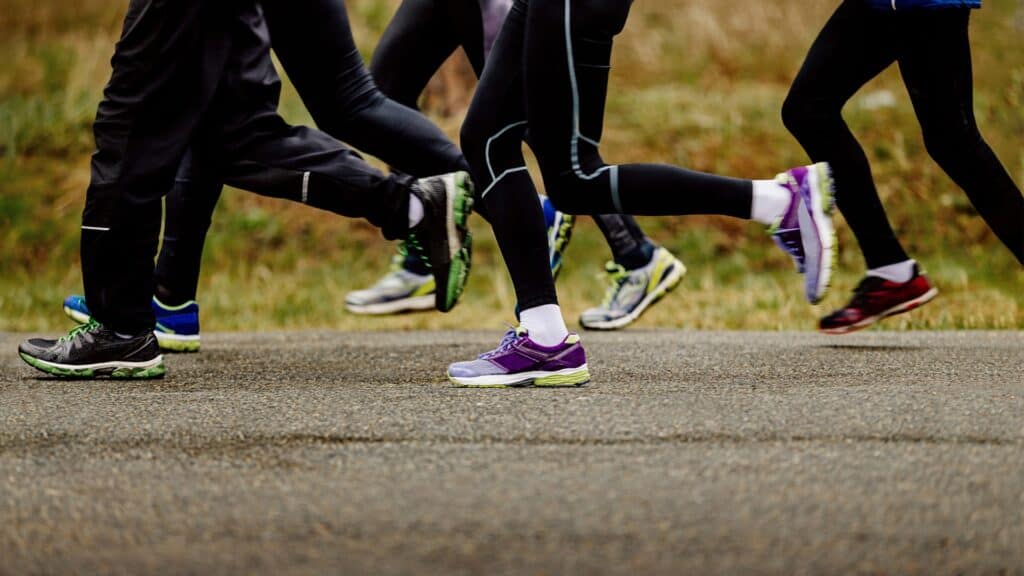One of the critical decisions for runners is choosing the right pair of shoes. It’s not just about comfort; it’s about performance, support, and injury prevention.
In this article, we’ll delve into the debate of whether to use the same shoes for training and races or opt for different pairs.

Understanding Your Needs
Before diving into the shoe selection, it’s crucial to understand what you’re training for.
Are you preparing for a 5k, a half-marathon, or a full marathon? Your race distance significantly impacts the type of shoes you should wear.
For shorter distances like 5k races, lighter shoes with less cushioning and a lower heel-to-toe drop are suitable. However, as you move up to longer distances like half-marathons and marathons, shoes with more support and cushioning become essential to protect your legs from the pounding of extended mileage.
The Importance of Heel-to-Toe Drop
One factor to consider when choosing shoes is the heel-to-toe drop, also known as the offset or the slope. This measurement indicates the difference in height between the heel and the forefoot of the shoe. Shoes with a higher drop encourage heel striking, while those with a lower drop promote a more natural midfoot or forefoot strike.

Training vs. Racing Shoes
It’s entirely acceptable to use different shoes for training and races, and each serves its purpose.
During training, you’ll want shoes that offer ample cushioning, support, and durability to withstand the rigours of your workouts. These shoes are often slightly heavier but provide the protection needed for long miles and varied terrain.
In contrast, racing shoes are designed for speed. They are lighter, more responsive, and often have a lower heel-to-toe drop. While they may lack the cushioning and support of training shoes, they offer a more efficient ride, ideal for maximizing performance on race day.
Runners Guide To Pronation, Overpronation & Supination
Finding the Balance
So, should you rotate between different pairs of shoes for training and races? The answer depends on your goals and preferences. Here are some considerations:
- Distance: For shorter races like 5k or 10k, lighter racing shoes with lower heel-to-toe drops are suitable. However, for longer distances like half-marathons and marathons, opt for more supportive shoes, especially if you’re prone to injury.
- Training Adaptation: Gradually introduce racing shoes into your training regimen to allow your body to adapt. Start with shorter runs and gradually increase the distance as your body adjusts to the lower drop and reduced cushioning.
- Race Specificity: If you have a specific goal race, consider using racing shoes tailored to that distance. For example, choose lighter shoes for shorter races and more cushioned shoes for marathons.
- Performance vs. Protection: Balance the trade-off between performance and protection. While racing shoes may enhance speed, they may also increase the risk of injury, especially during longer races. Prioritize your overall well-being over marginal performance gains.
- Personal Preference: Ultimately, the decision comes down to personal preference. Some runners prefer consistency and stick to one pair of shoes for both training and races, while others enjoy the psychological boost of switching to lighter, faster shoes on race day.
In conclusion, choosing the right pair of shoes for training and races is essential for maximizing performance and minimizing the risk of injury.
While it’s acceptable to use different shoes for each purpose, consider factors such as distance, heel-to-toe drop, and personal preference when making your decision. Experiment with different shoes during training to find what works best for you, and remember to prioritize comfort, support, and performance on race day.



Comments are closed.